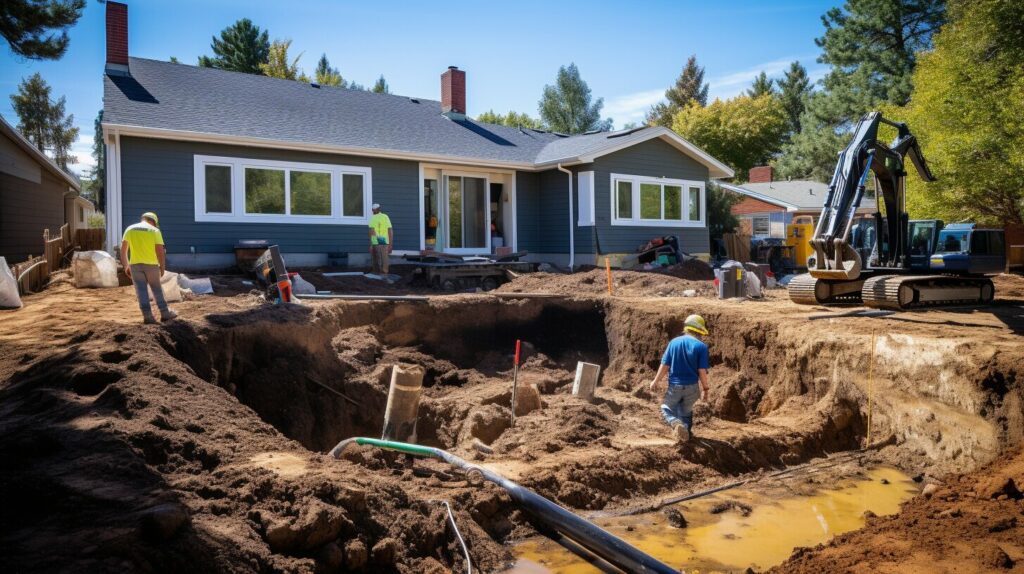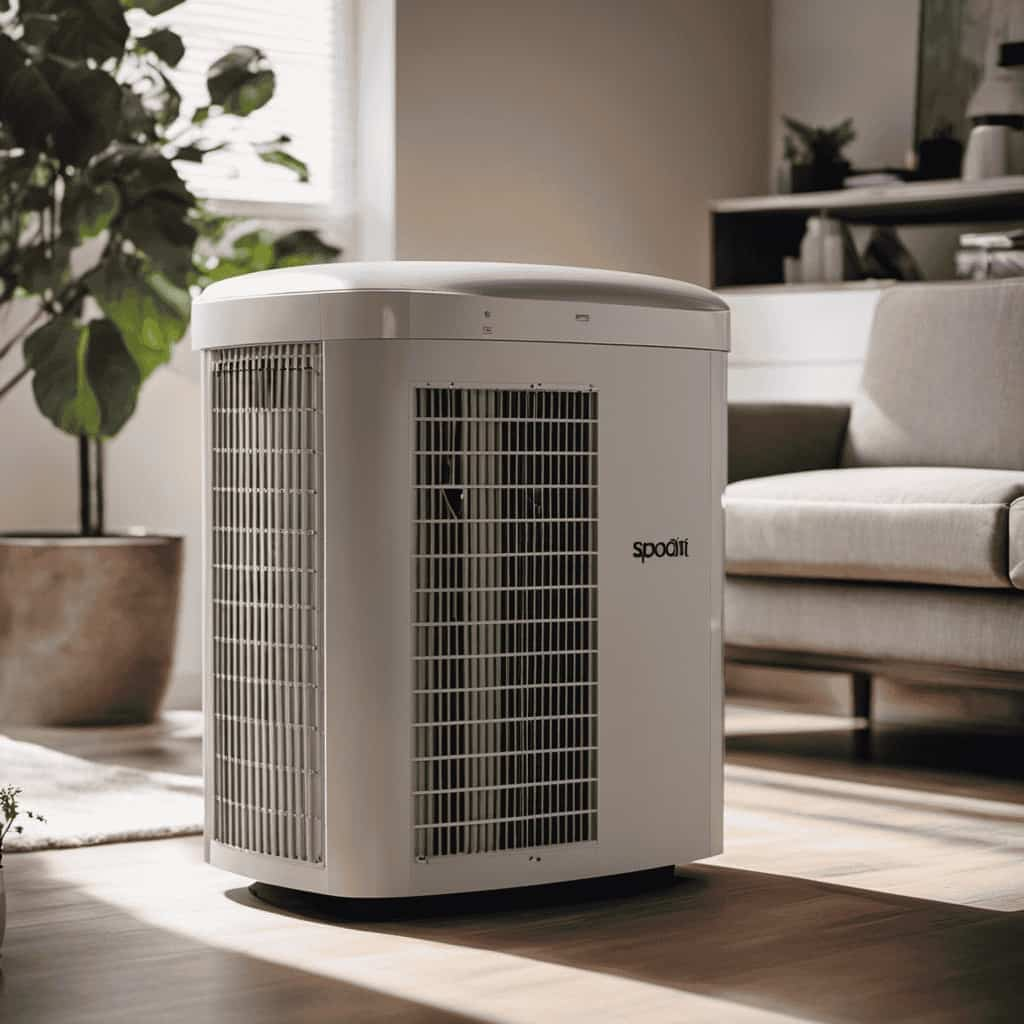Are you in search of an environmentally friendly and affordable heating solution for your home? Consider investing in a geothermal heat pump! This advanced system utilizes renewable energy from the ground, providing both heating and cooling functions. Unlike conventional furnaces and air conditioners, geothermal heat pumps are incredibly efficient, helping you save on both energy and costs.
Geothermal heat pumps work by drawing on the constant temperatures found underground. The system uses buried pipes to absorb heat from the ground during winter, warming your home, and in the summer, it removes heat from your home and transfers it back into the ground. With efficiency rates of 50% to 70% for heating and 20% to 40% for cooling, geothermal heat pumps outperform traditional heating and cooling systems.
Not only are geothermal heat pumps efficient, but they are also eco-friendly. These systems do not produce carbon dioxide greenhouse gas emissions, making them a sustainable choice for homeowners who prioritize environmental responsibility. By investing in a geothermal heat pump, you can experience the benefits of renewable energy and contribute to a greener future.
Key Takeaways:
- Geothermal heat pumps are an eco-friendly and cost-effective heating solution.
- They use renewable energy from the ground, making them a sustainable choice.
- Geothermal heat pumps are 50% to 70% more efficient for heating and 20% to 40% more efficient for cooling.
- These systems do not produce carbon dioxide greenhouse gas emissions.
- Investing in a geothermal heat pump can help you save energy and money.
How Geothermal Heat Pumps Work
A geothermal heat pump operates by utilizing a heat exchanger, which is responsible for the transfer of heat from one space to another. During the summer months, the heat pump extracts heat from the building and releases it into the ground for cooling purposes. Conversely, in the winter, it taps into the natural heat stored in the ground and transfers it to the home for efficient heating. This process allows geothermal heat pumps to achieve higher energy efficiency compared to traditional air-source heat pumps.
Geothermal heat pumps harness the constant ground temperatures to deliver impressive energy savings. They can reduce energy consumption by approximately 25% to 50% compared to air-source heat pump systems. Additionally, geothermal heat pumps can maintain high efficiencies even during the coldest winter nights, ensuring optimal heating performance throughout the year.
| Comparison | Geothermal Heat Pumps | Air-Source Heat Pumps |
|---|---|---|
| Energy Efficiency | 25% to 50% energy savings | Lower energy savings |
| Cold Climate Performance | High efficiency in extreme cold | Efficiency may decline in cold weather |
| Environmental Impact | Zero carbon dioxide emissions | Some carbon dioxide emissions |
| Long-Term Savings | Higher initial cost, but savings recouped in 5 to 10 years | Lower initial cost, but higher energy bills |
While the installation cost of geothermal heat pumps may be higher compared to traditional systems, the energy savings achieved can recoup the additional expenses within 5 to 10 years. Investing in a geothermal heat pump not only provides long-term cost-effectiveness but also contributes to a cleaner and more sustainable environment. By reducing energy consumption and eliminating carbon dioxide emissions, geothermal heat pumps offer a smart and eco-friendly solution for heating and cooling needs.
Benefits of Geothermal Heat Pumps
Geothermal heat pumps offer numerous benefits for homeowners. First and foremost, they are eco-friendly, providing a sustainable heating and cooling solution. Unlike traditional systems that rely on fossil fuels, geothermal heat pumps harness the natural heat from the earth, producing no carbon dioxide greenhouse gas emissions. This makes them an environmentally conscious choice for those looking to reduce their carbon footprint.
Not only are geothermal heat pumps eco-friendly, but they are also highly energy-efficient. These systems can provide significant energy savings compared to conventional heating and cooling methods. According to the Government of Canada, homeowners can save up to 65% in energy costs by using geothermal heat pumps. This makes them a cost-saving option in the long run, despite the higher initial installation costs.
Additionally, homeowners who install an Energy Star-approved geothermal heat pump may be eligible for a federal tax credit. In 2020, the tax credit is 26%, and in 2021, it will be 22%. This tax credit can further offset the initial investment and make geothermal heat pumps even more financially attractive. It’s important to note that these tax credits are subject to change, so it’s crucial to consult with a tax professional for the most up-to-date information.
| Benefits | Description |
|---|---|
| Eco-friendly | Geothermal heat pumps do not produce carbon dioxide greenhouse gas emissions, making them environmentally friendly. |
| Energy-efficient | These systems provide significant energy savings compared to traditional heating and cooling methods. |
| Cost-saving | Geothermal heat pumps can save homeowners up to 65% in energy costs. |
| Tax credits | Installing an Energy Star-approved geothermal heat pump may be eligible for a federal tax credit of 26% in 2020 and 22% in 2021. |
In summary, geothermal heat pumps offer a multitude of benefits for homeowners. From being eco-friendly and energy-efficient to providing cost-saving opportunities and tax credits, these systems are a worthwhile investment. By choosing a geothermal heat pump, homeowners can enjoy a comfortable indoor environment while reducing their carbon footprint and saving money on energy costs.
Installation and Maintenance of Geothermal Heat Pumps
Installing a geothermal heat pump system requires careful planning and professional expertise to ensure optimal performance and efficiency. The type of loop system used will depend on factors such as available land, soil conditions, and access to water bodies. Here are the different types of loop systems commonly used for geothermal heat pump installations:
- Horizontal: This cost-effective option is suitable for residential applications with sufficient land. Pipes are buried horizontally in trenches, and the system is connected to the heat pump.
- Vertical: Ideal for larger-scale systems with limited land and shallow soil, vertical installations involve drilling boreholes and inserting the pipes into the ground.
- Pond/Lake: If you have an adequate water body on your property, this option can be the least expensive. Pipes are laid underwater, utilizing the water as the heat exchange fluid.
- Open-Loop: This system utilizes well or surface water as the heat exchange fluid. It requires a water source and proper permits, making it less common for residential installations.
Once the geothermal heat pump system is installed, regular maintenance is essential to keep it running efficiently. Annual tune-ups by a professional HVAC technician are recommended to inspect and service the system. During the tune-up, the technician will:
- Check and replace air filters to ensure proper airflow and prevent debris buildup.
- Inspect the ground loop pump and antifreeze solution to ensure they are functioning correctly.
- Test the system’s components, including the compressor and refrigerant charge, to detect any issues.
- Ensure all electrical connections are secure and operating safely.
Regular maintenance not only helps prevent unexpected breakdowns but also extends the lifespan of your geothermal heat pump system. It is also crucial to address any leaks or performance issues promptly to avoid costly repairs and maximize energy efficiency.

Comparison of Geothermal Heat Pump Loop Systems
| Loop System | Installation Cost | Space Requirements | Suitability |
|---|---|---|---|
| Horizontal | Low | Adequate land | Residential with sufficient land |
| Vertical | Moderate | Shallow soil | Larger-scale systems with limited land |
| Pond/Lake | Low | Adequate water body | Residential or commercial with water source |
| Open-Loop | Moderate | Requires water source and permits | Residential or commercial with access to well or surface water |
Troubleshooting and Maintenance Tips for Geothermal Heat Pumps
If you encounter any issues with your geothermal heat pump, there are several troubleshooting steps you can take before calling a professional. Start by checking the thermostat and ensuring it is set to the correct temperature. Sometimes a simple adjustment can resolve the problem.
Next, inspect the air filters and clean or replace them if they are dirty. Dirty air filters can restrict airflow, leading to reduced system performance. Regularly maintaining clean filters is essential for optimal operation.
It is also crucial to check for any obstructions that may be blocking airflow around the unit. Clear away any debris or objects that might hinder proper ventilation. Improper airflow can cause the system to work harder, leading to decreased efficiency and potential malfunctions.
If the problem persists or you notice other issues such as low cooling output, leaks, or strange noises, it is best to contact a professional HVAC technician. They can inspect the refrigerant charge, ductwork, compressor, and other components to identify and resolve any underlying problems. Addressing these issues promptly can prevent further damage and ensure your geothermal heat pump operates at its best.
| Issue | Troubleshooting Steps |
|---|---|
| Low cooling output | – Check and clean air filters – Ensure proper airflow around the unit – Verify thermostat settings |
| Leaks | – Inspect the system for visible leaks – Contact a professional technician for repairs |
| Strange noises | – Listen for unusual sounds – Have a technician inspect the system for potential issues |
| Dirty air filters | – Clean or replace air filters regularly – Follow manufacturer’s recommendations for maintenance |
Regular maintenance is key to keeping your geothermal heat pump running efficiently. Besides addressing any problems, it is essential to schedule an annual tune-up by a professional. During the tune-up, experts will inspect and service the system, including checking and replacing air filters, inspecting the ground loop pump and antifreeze, and ensuring all components are running smoothly. Taking preventive measures and addressing issues promptly can help prolong the lifespan of your geothermal heat pump and ensure it continues to provide efficient and reliable heating and cooling for your home.
Conclusion
Upgrade to a geothermal heat pump today and experience the benefits of an energy-efficient heating system. Geothermal heat pumps offer a cost-effective and eco-friendly solution for your home’s heating and cooling needs. By harnessing the constant temperature of the ground, these systems can significantly reduce your energy consumption and carbon footprint.
Although the initial installation cost may be higher, the long-term energy savings and potential tax credits make geothermal heat pumps a worthwhile investment. You can save up to 65% in energy costs compared to traditional heating and cooling systems. Plus, installing an Energy Star-approved geothermal heat pump makes you eligible for a federal tax credit.
Regular maintenance and prompt repairs are essential to keep your geothermal heat pump running efficiently. Annual inspections and addressing any leaks promptly will ensure optimal performance and a long lifespan for your system. With a geothermal heat pump, you can enjoy an energy-efficient, cost-effective, and eco-friendly heating system for your home.
What Makes Geothermal Heat Pumps More Efficient in Sustainable Buildings?
Geothermal heat pump efficiency in sustainable buildings is notable due to its environmentally friendly approach. By tapping into the Earth’s natural, constant temperature, these systems provide both heating and cooling, reducing reliance on fossil fuels. This renewable energy source minimizes carbon emissions and decreases energy consumption, making it a greener choice for sustainable buildings.
FAQ
What is a geothermal heat pump?
A geothermal heat pump is a highly efficient and environmentally friendly heating and cooling system that uses renewable energy from the ground. It draws heat from the ground to warm your home in the winter and removes heat from your home to cool it in the summer.
How does a geothermal heat pump work?
A geothermal heat pump works by using a heat exchanger to transfer heat from one space to another. In the summer, it extracts heat from the building and transfers it to the ground for cooling. In the winter, it takes natural heat from the ground and transfers it to the home for heating.
What are the benefits of geothermal heat pumps?
Geothermal heat pumps are eco-friendly, energy-efficient, and cost-effective. They do not produce carbon dioxide emissions, provide significant energy savings compared to traditional systems, and can save homeowners up to 65% in energy costs. Additionally, installing an Energy Star-approved geothermal heat pump is eligible for a federal tax credit.
How is a geothermal heat pump installed and maintained?
The installation of a geothermal heat pump system can vary depending on the type of loop system used. It is important to have a professional inspect and service the system annually to ensure its proper operation and longevity.
What troubleshooting and maintenance tips are there for geothermal heat pumps?
If you encounter issues with your geothermal heat pump, you can check the thermostat, inspect the air filter, and ensure there are no obstructions blocking airflow. If the problem persists, it is best to have a professional inspect the refrigerant charge, ductwork, compressor, and other components. Regular maintenance, including annual inspections and addressing any leaks promptly, is crucial.









